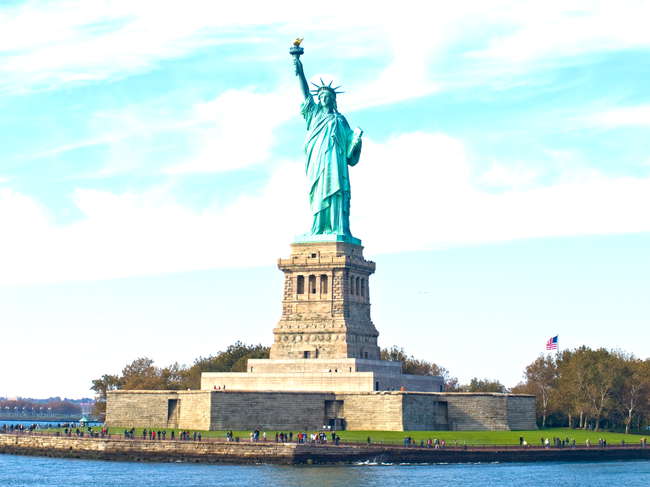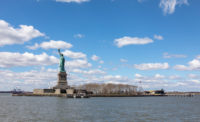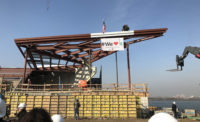
The Statue of Liberty reopens today, Oct. 28, with a celebration of its 126th birthday and the substantial completion of a one-year, $30-million upgrade to meet current life-safety codes. The majority of the renovation work was in the 145-ft granite pedestal that Lady Liberty stands on, with further work on the rails and protective glass on the stairs leading up to the crown.
The project team is putting the finishing touches on a few elements including commissioning of the new HVAC system and on the terreplein stairs leading to the ground level, all of which it expects to finish by year-end, says Paul Natoli, president and CEO of contractor Joseph A. Natoli Construction Corp., Pine Brook, N.J.
Work on the national monument, located on a 12-acre island in New York Harbor, was funded with $25 million in congressional appropriations and other funds. The project called for adding two pedestal exits, widening the pedestal stairs, replacing the pedestal elevator and the statue's emergency elevator, and improving restrooms and mechanical, electrical, fire suppression and security systems. The new lifts make the observation deck, for the first time, wheelchair accessible.
The island remained open during renovations, and it was important that construction did not obstruct harbor views for the 5,000 to 10,000 visitors that tour the site daily, says Michael Mills, partner at Mills + Schnoering Architects, the architect and project manager on the job. The project team used the U.S. Parks Service's docks for staging, bringing construction materials from two locations in Jersey City, N.J., in on barges, he says.
"By far the most challenging aspect of the project was the logistics involved—getting the materials, the equipment, the manpower from New Jersey to work on an island in the middle of New York Harbor. Obviously, it's not your conventional construction site where you can roll your trucks on and off," Natoli says.
"What complicates it further is that parks service police have to sweep everything for bombs and dangerous substances." Even the crew had to go through security stops as they boarded boats from Liberty State Park in Jersey City and then again when they arrived on Liberty Island, Natoli says.
Another complication was working in the extremely tight space of this historic monument. The interior of the pedestal, which is 17 feet at its narrowest and 27 feet at its widest, contains massive beams supporting the statue. Gustave Eiffel designed the original support system.
Natoli says the use of 3D imaging was important in understanding how to approach working in the Eiffel structure. "It really helped in both the surveying aspect of the existing structure as well as in understanding the complexity of what's inside that facility," he says.
There were no safety incidences on the project, which came in on time and on budget, he adds.
Other key players on the project included Atkins North America Inc., construction manager; Keast & Hood Co., structural engineer; and Joseph R. Loring & Associates, MEP engineer.
The statue, designed by French sculpture Frederic Bartholdi and given to the U.S. in 1886, is the only one in the state designated as a World Heritage Site.



Post a comment to this article
Report Abusive Comment